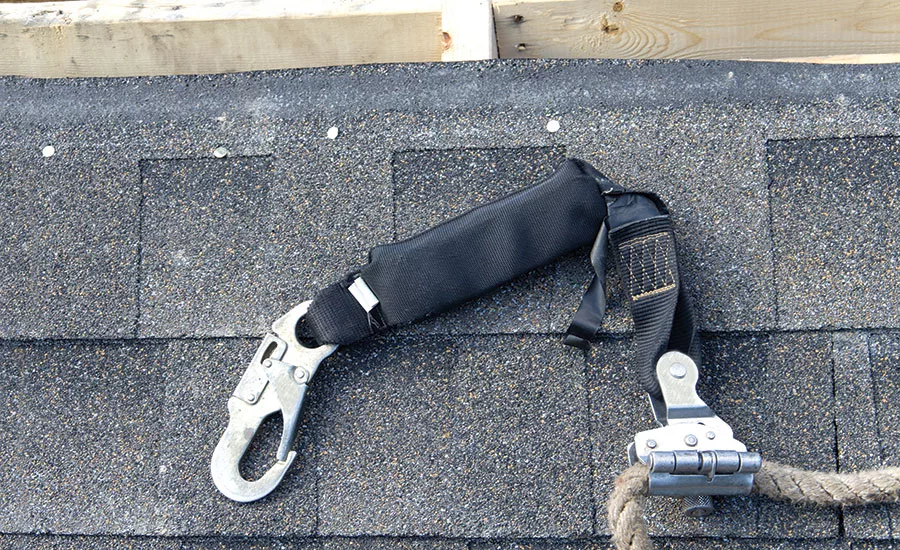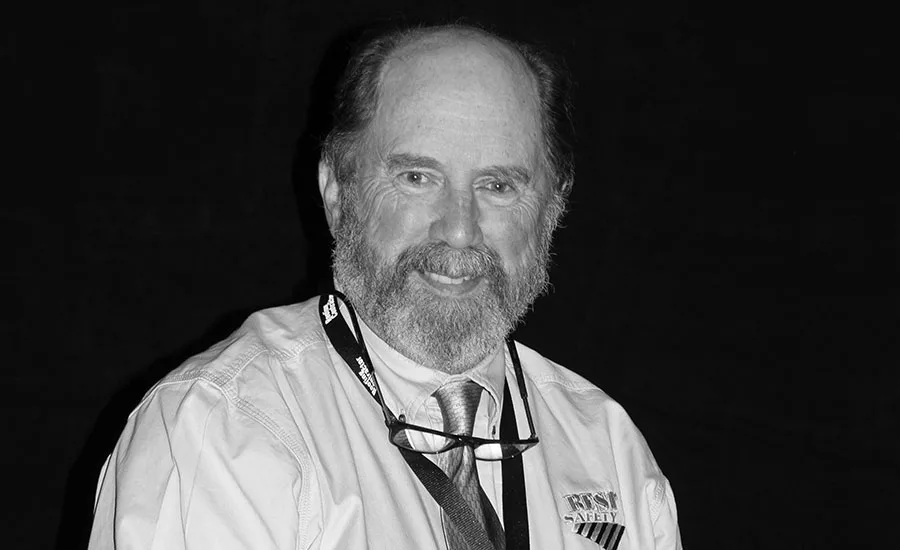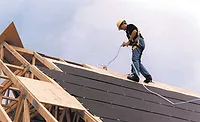Mentoring the Roofing Contractor's 'Competent Person' on Jobsites


Under Federal law, all individuals are presumed legally competent until a judicial hearing determines otherwise. Under the Occupational Safety and Health Act (OSHA), however, the competency criteria of a designated employee must first be evaluated by his/her employer. Outside the legal forum, competency is often used to assess one’s ability to understand and/or perform certain acts in a logical manner. One individual’s assessment of another’s competence is commonly understood as the identification of someone’s ability to make ethical decisions based on a variety of environmental, social and physical conditions. That’s not necessarily easy to do.
Definition v. Meaning
OSHA first introduced the definition of a Competent Person (CP) in 1989. Before then, it was the sole responsibility of the employer to verify implementation of safe work practices on the job. If the employer could not feasibly be on every worksite at all times where his employees were exposed to existing and potential hazards, they were less likely to be cited by an OSHA compliance officer. Today, more than a dozen OSHA standards identify the employee who is designated as CP has become a non-liable, yet functional extension of the employer on site. If the CP-employee performs incompetently, OSHA will never issue him/her a citation, but rather his/her employer for not verifying competency. According to 29 CFR, §1926.20[b][2] General Safety and Health Provisions, he/she is responsible to “provide for frequent and regular inspections of the jobsite, materials and equipment.” In order to ensure compliance with the employer’s Accident Protection Program, OSHA’s 1990 CPL 02-00-087(H)(4)(c) Inspection Procedures for Enforcing the Excavation Standard, states:
“(2) Competent Person. COSH shall pay particular attention to the investigation and documentation data to establish that any person serving in this capacity possesses the capability of identifying existing and potential hazards for workers; (a) To be a ‘competent person’ under this standard, a person must have had training in, and be knowledgeable about, soils analysis, the use of protective systems and the requirements of this standard; (b) The competent person having such training and knowledge must be capable of identifying existing and predictable hazards in excavation work and have the authority to take prompt correct measures to eliminate existing or potential hazards.”
This was OSHA’s first task-specific obligation for a designated CP on site. It was a difficult concept for contractors to swallow in 1998, but today, it’s applied to more than a dozen OSHA standards. Additionally, nearly everyone I ask for the CP definition in class can explain the general idea. The ability and authorization of the CP to “observe, act and verify” clearly defines the degree to which any such designated employee is actually competent on any given shift.
Competent Person Program
Everyone knows that the competent person (CP) is made, not born, and not many employers have successfully developed a written program to create one. As a young worker, I heard “Competency enters through the backbone.” It took a few decades in the ‘hole’ before that made any sense to me. This process of acquiring backbone takes time to establish and effort to assess. Many CPs are assigned their duties one day and on their own the next, without any instructions other than to not have any accidents.
OSHA states that the employer must designate a competent person (CP) to oversee implementation of his Safety and Health Program (SHP) based on their “training and experience.” When I ask most CPs to show me either a written or digital copy of their corporate SHP, I’m usually told “Back in the office.” When I ask them to recite the contents they are at a complete loss. Most, if they have seen it, have never read, studied or adapted it. A SHP should be a living, breathing document that reflects the actual on-the job hazards and controls. It’s the CP’s task to train his coworkers in the Safe Work Practices (SWPs) needed on every job. When the rank-and-file finish reading their own binder copy assigned in training class, they should have zero questions. But there are always questions, indicating missing SWPs for their tasks.
The SHP should be dynamic and always changing, not a static textbook on a shelf somewhere. I train CPs to instruct their coworkers to annually mark-up their SHP with red pens and sticky notes, changing the document per their experiences on the job. OSHA says an accident-prevention program without employee input is insufficient and worthy of citation. It’s the worker’s own SHP, so they should have input if they are to achieve zero accidents and lower their employer’s EMR. In almost all cases, it’s used to prevent the injury, illness or death of employees, NOT the employer. The objective is to prevent any of this year’s accidents and near-miss events from reoccurring.
CP Selection Criteria
The employer will select CPs based on their safety training and work experience. That person’s ability to communicate, document, analyze, and make quick ethical decisions is key. In addition, committing to goals, remaining current with safety standards, products and practices on a daily basis is important. By defining competence site-specifically, it permits the employees to know what they need to be safe and productive on every site, on every shift. While I seldom depend on Wikipedia alone as a reliable source, this recent article on the subject of competence (https://en.wikipedia.org/wiki/Competence_(human_resources), intrigued me, stating:
“Some scholars see “competence” as a combination of practical and theoretical knowledge, cognitive skills, behavior and values used to improve performance; or as the state or quality of being adequately or well qualified, having the stability to perform a specific role. . . . Competency is sometimes thought of as being shown in action in a situation and context that might be different the next time a person has to act. In emergencies, competent people may react to a situation following behaviors they have previously found to succeed. To be competent, a person would need to be able to interpret the situation in the context and to have a repertoire of possible actions to take and have trained in the possible actions in the repertoire, if this is relevant. Regardless of training, competency would grow through experience and the extent of an individual to learn and adapt.”
I find these last sentences extremely interesting as they imply that a competent individual must be continuously evolving. As a work-in-progress, I never consider myself done with becoming competent. How do I personally confirm my status as a CP today? OSHA is no help here, so this is what works for me:
- Never stop learning about safety on the job. I keep reading, attending training and asking those with more knowledge their opinions. Strive to become better at taking responsibility for the lives and safety of others.
- I think about whether I’d put my only child on your job, doing your task with the training and equipment I assigned you, without any hesitation? It’s a yes or no question answered in three seconds or less.
- Trust your instincts. If I can’t relax knowing that I did all I could at the end of long day shift, I feel like heading back to the jobsite to confer with the CP on the night shift. On the few occasions where I was impelled to do so, we found the “widowmaker” I missed, hiding in plain sight. Always listen to the hairs on the back of your neck. They never lie, but unfortunately never shout either.
Competentcy Assessment Matrix
Keeping track of progress in competency requires documentation. I developed an assessment matrix comprised of three levels to relatively evaluate the level of competency of yourself or another individual. While by no means fool-proof or comprehensive, it does, however, afford the mentor a reasonable method to track the progress of a CP-in-training. As the CP enters into the moderate levels, the mentor may give him/her more responsibility to perform certain tasks on their own, while overseeing their performance in either hazard awareness or control according to their score. Likewise, when their performance enters into high competency the mentor may choose to significantly reduce oversight, checking in only occasionally. This allows the more advanced CP to self-audit while correcting errors of omission or commission themselves in a timely manner. While self-evaluation may be a difficult task, by this time the CP has become sufficiently familiar with his/her own strengths and weaknesses to know when to ask for help from his employer or mentor.
Span of Control
As the saying goes, we’re only human. The CP will have days with low energy and unavoidable distractions. No matter what else occurs during the shift, CPs shall always do their personal best to act in “good faith” based on their training and experience. This term is often used in court, where the CP is required to justify his/her actions in detail on the day of the accident to imply “good faith.”
Multi-employer jobsites can be chaotic within project limit lines (PLLs). Those are defined as a physical, three-dimensional bubble (described by your contract documents) within which — on any day — work is performed under the CP’s sole authority. OSHA’s Multi-Employer Citation Policy defines the roles of hazard criteria before, during and after an accident or near-miss event. The CP has a duty to understand them and constantly inspect sites for when the PLLs of other contractors overlap.
To remain competent in today’s litigious environment, the CP has to forecast the potential, probable or possible hazards an hour, a day, or a week in the future. There will come a time when a CP realizes they’re approaching the outer limits of his/her span of control. For instance, “prompt corrective actions” might entail hiring one or more additional CPs to assist on the job until their span of control has been re-established. Remember, if the hole’s too deep, first stop digging. The CP also retains the required authority to hire a Qualified Person (QP), such as a state-registered professional engineer, to solve problems. Not only must the CP maintain acute awareness, but also identify the early warning signs of an imminent catastrophe. If such an elevated level of tension and stress are not acceptable, an employer should obviously decline that person the CP designation.
Prime Directive
Monitoring a CP is a practice of excellence in a rather crude business. It obviously takes time to practice and evaluate, and if you never fail, you’re not trying. I’ve heard “There are no experts, only dedicated practitioners,” in reference to high-angle rope rescue training. In my professional experience, the CP is repeatedly tested by personnel acts (60 percent) and on-site conditions (40 percent), with an occasional emergency thrown in to keep the adrenaline pumping. These can be teachable moments, but only if and when the CP-in-training is adequately mentored.
The prime directive for all CPs, regardless of their specialty, is universal: safety, quality, and productivity. If every crewmember followed suit, the CP would have many more curves than sharp corners to navigate. I issue these simple directives in every pre-shift safety briefing after reviewing the day’s job safety analysis. I also guarantee each CP that I mentor, that sooner or later, someone higher in the food chain will try to alter the order. It’s almost inevitable that they’ll be challenged within the first 30-60 workdays when they are eventually on site performing solo-audits. The legal truth is, there really is no one “above them” when it comes to their safety assignment. The employer’s entire responsibility and authority has been legally delegated to them by OSHA the moment when their names were entered as CP in the SHP.
There will always be a first direct challenge to their safety ethics. How they respond will determine their future as a CP. There will be many more challenges, but none as memorable or difficult.
During the 15-year, $14.6 billion ‘Big Dig’ in Boston, there were more than 5,000 construction workers per shift, completing roughly $3 million dollars of work every day. With a larger than normal presence on this job, OSHA compliance officers had to simplify the task of verifying CPs during their inspections by asking them a single question: “Do you have the boss’s wallet?”
If they failed to answer or answered “No,” they were incompetent and their employer was issued up to a $15,000 fine — more if it was a repeat violation. It didn’t take long before everyone understood. Essentially, at least in the case of the Big Dig, the ability to correct hazards promptly entailed spending the boss’s money for material, labor and equipment without wasting precious time asking permission from anyone. That works for me.
Conclusion
As confusing as the process of mentoring can be, there is a starting point. The success and failure of the employer’s written Competent Person Mentoring Program depends primarily on the employer’s perception of competency and level of commitment. Does the employer have a documented method to assess the progress of the CP-in-training? Is it based on observation skills, ability to “act promptly,” and consistency? Everyone will know if the rubber actually meets the road when the CP enters the site.
There are as many ways for mentoring to be manifested as there are contractors with safety and health programs out there. However, one thing is for certain: no one becomes competent for the lives of others purely by accident.
Looking for a reprint of this article?
From high-res PDFs to custom plaques, order your copy today!





